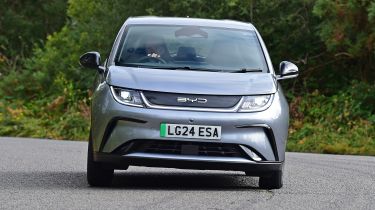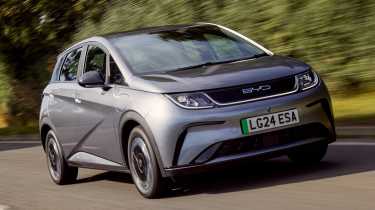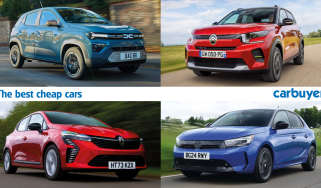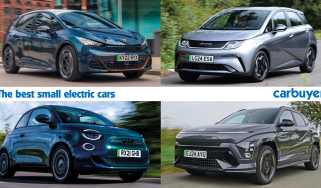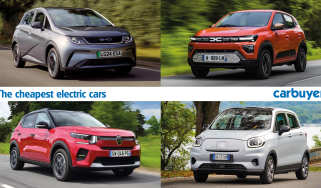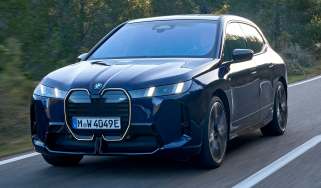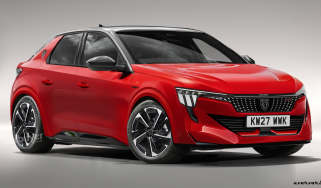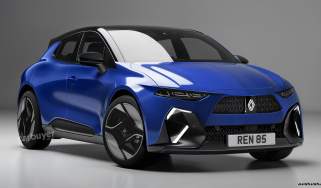BYD Dolphin review - Electric motor, drive & performance
“The BYD Dolphin is safe and secure to drive rather than being particularly fun on a winding road”
If you’re expecting a sports car, then you’d better look elsewhere. At this price point, an MG4 is much more fun to drive – not least due to its rear-wheel drive layout and sharper steering.
Though the Dolphin originally launched with the 201bhp motor, Active and Boost models have since arrived with more modest power figures. Active is the least powerful and is by far the slowest as a result, but that won’t really matter to most buyers and it’s capable enough, especially around town where the instant shove is useful at lower speeds. This model’s 16-inch alloy wheels work particularly well around town, too, because the high-profile tyres mean bumps and imperfections are soaked up effectively.
One gripe is the entry-level model’s standard-fit Linglong tyres – these were initially going to be used across the entire Dolphin range but don’t offer a vast amount of grip. The Dolphin Active handles safely and predictably regardless, but models higher up in the range get better-quality Hankooks.
The Boost model’s power figure sits in between, but we’re yet to test it – it could prove the perfect middle ground because it only costs around £1,000 more than the Active but will likely feel punchier to drive.
Our first experience with the BYD Dolphin was with the most potent 201bhp electric motor available at launch and on Comfort and Design trims. The body does roll a bit through the corners, but the car felt assured through faster changes of direction – despite our launch model riding on tyres from Linglong – a brand we’d not previously heard of. On this note, BYD later confirmed that all European Boost, Comfort and Design cars would come fitted with softer Hankook rubber from late 2023; we’ve tried these in the UK and can say with confidence that this was a very positive change for British buyers – especially in wet conditions.
More reviews
In-depth reviews
The steering is light even in sport mode, and doesn’t offer much in the way of communication through your fingers. But the car is easy enough to place and always behaves exactly as you’d expect. Being too hasty with the accelerator pedal can cause the front wheels to spin, but in general, it’s a very easy car to drive.
That’s true in town, too; all cars come with 360-degree cameras, so parking isn’t an issue – though even without these we found visibility to be good. The car’s upright rear windows and short overhangs help in this regard.
But you expect a car designed to rival petrol and electric models like the Ford Fiesta and Vauxhall Corsa to be an accomplished urban runaround. What’s especially surprising is how adept the BYD is on the motorway – certainly with the most powerful motor, which allows for easy overtaking.
It’s also comfortable (note: we’ve so far only driven a car with the more complex multilink rear suspension) and relatively quiet, with just a little wind noise around the door mirrors. There’s a maturity to the way the BYD Dolphin goes about its business – we reckon plenty of people will really like the way it drives.
Our biggest complaint is that neither of the two settings for the regenerative braking system is particularly strong. There isn’t even a hint of one-pedal driving here – those who prefer this style of driving will need to look elsewhere.
0-62mph and top speed
The BYD Dolphin is now available with three motor options. The least powerful of these has just 94bhp so it takes around 12.3 seconds to go from 0-62mph. The latest electric cars have skewed the expectation we have of the performance of the average runaround, so while it may not offer face-bendingly quick acceleration, in reality it’s perfectly fine for most buyers; that’s especially true if you’re using the Dolphin in tighter urban areas where such quick performance isn’t really necessary.
Above this there’s the Boost model with 174bhp. While we’re yet to test it, this version should feel a good chunk quicker, though again we’ll need to wait a little longer before we offer any opinion on what it’s like to drive. A 0-62mph time for this version is yet to be released.
The top two trims both feature a punchier 201bhp motor. These versions do 0-62mph in seven seconds, while top speed is capped at 100mph. It certainly feels quick in a straight line; a short delay when you put your foot down is quickly forgotten as the supermini builds momentum. Acceleration is linear, but the Dolphin is not as neck-snappingly fast as something like a Tesla or a Smart #1.
|
Model |
Power |
0-62mph |
Top speed |
|
Active |
94bhp |
12.3s |
93mph |
|
Boost |
174bhp |
NA |
100mph |
|
Comfort, Design |
201bhp |
7.0s |
100mph |
Carbuyer notes
“The BYD Dolphin is a surprisingly accomplished urban runaround that’s also perfectly capable of the odd longer motorway trip."
